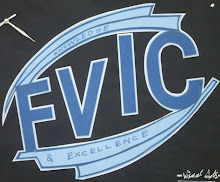
ADIRE - TIE AND DYE.
Adire translates as tie and dye, perhaps more than any art form, Adire textile reflects
the richness of Nigerian cultural heritage. For this reason making of the Art of Adire
should be encouraged in schools, and it could be adopted as school uniforms as a way
of promoting our culture.
The Adire textiles are a viable means of which the rich African Cultural heritage
and ideas could be conveyed to other culture and outside world.
Adire, tie and dye is a resist process, which consists of tying, knotting, folding
or sewing certain parts of the cloth in a way that when immersed in dye solution,
the dye will not penetrate into the tied area of the fabric.
The production of Adire textile is done in two ways in which both are resist methods
of dying a pattern on a fabric. A part of the cloth is protected before it is immersed
into the dye bath. The resisting agent, such as rafia or cotton thread resists the dye
so as not to penetrate into the resisted areas.
THE MAKING OF ADIRE (TIE & DYE)–
.Materials For Tie & Dye:
i. Fabric- all kinds of cotton cloth are suitable.
ii. Dye
iii. Dye Chemicals- Caustic Soda, Sodium Hydro sulphite, Soda Ash, Common Salt
iv. Dye Vessels- Any vessels of enamel, Stainless, Steel and galvanized ware
are suitable for hot and cold dyes.
v. Thread- All kinds of string, Bast, T wist, Yarn, Raffia(iko), etc
vi. Spoon- For measuring and adding dye
vii. Sticks- For Stirring the Dye
viii. Scissors
ix. Rubber Gloves
x. Apron
xi. Pins & Needles
xii. Iron
xiii. Pencil, Chalk or Charcoal
xiv. Ruler
v. Polythene Bags(of all sizes)
THE PROCESS
STEP 1- THE FABRIC IS TIED INTO DESIRED DESIGN.
STEP 2- THE DYE AND THE CHEMICALS IS MIXED WITH HOT WATER.
STEP 3- DIP THE TIED FABRIC INTO DYE SOLUTION.
STEP 4- AFTER A WHILE THE FABRIC IS REMOVED FROM DYE SOLUTION AND UNTIED.
STEP 5- THE FABRIC IS WASHED THOROUGHLY TO REMOVE EXCESS DYE.
STEP 6- THEN THE FABRIC IS SPREAD TO BE DRIED.
STEP 7- FINALLY, YOU IRON THE FABRIC.
 STEP 1- THE FABRIC IS TIED INTO DESIRED DESIGN.
STEP 1- THE FABRIC IS TIED INTO DESIRED DESIGN. STEP 2- THE DYE AND THE CHEMICALS IS MIXED WITH HOT WATER.
STEP 2- THE DYE AND THE CHEMICALS IS MIXED WITH HOT WATER. STEP 3- DIP THE TIED FABRIC INTO DYE SOLUTION.
STEP 3- DIP THE TIED FABRIC INTO DYE SOLUTION.STEP 4- AFTER A WHILE THE FABRIC IS REMOVED FROM DYE SOLUTION AND UNTIED.
 STEP 5- THE FABRIC IS WASHED THOROUGHLY TO REMOVE EXCESS DYE.
STEP 5- THE FABRIC IS WASHED THOROUGHLY TO REMOVE EXCESS DYE. STEP 6- THEN THE FABRIC IS SPREAD TO BE DRIED.
STEP 6- THEN THE FABRIC IS SPREAD TO BE DRIED.

 ...And here are the finished works. These beautiful Tie-Dye Fabrics were done by the JSS 2 and JSS 1 Students ofFRENCH VILLAGE INTERNATIONAL COLLEGE, BADAGRY., LAGOS. The Art instructor is Mr. Adeniyi Olusegun Michael. Below is the principal, Mrs. Fadipe poses with some of the finished works.
...And here are the finished works. These beautiful Tie-Dye Fabrics were done by the JSS 2 and JSS 1 Students ofFRENCH VILLAGE INTERNATIONAL COLLEGE, BADAGRY., LAGOS. The Art instructor is Mr. Adeniyi Olusegun Michael. Below is the principal, Mrs. Fadipe poses with some of the finished works.









No comments:
Post a Comment